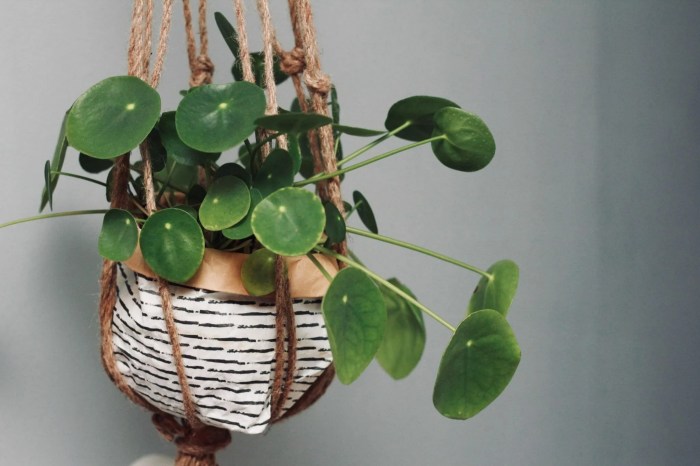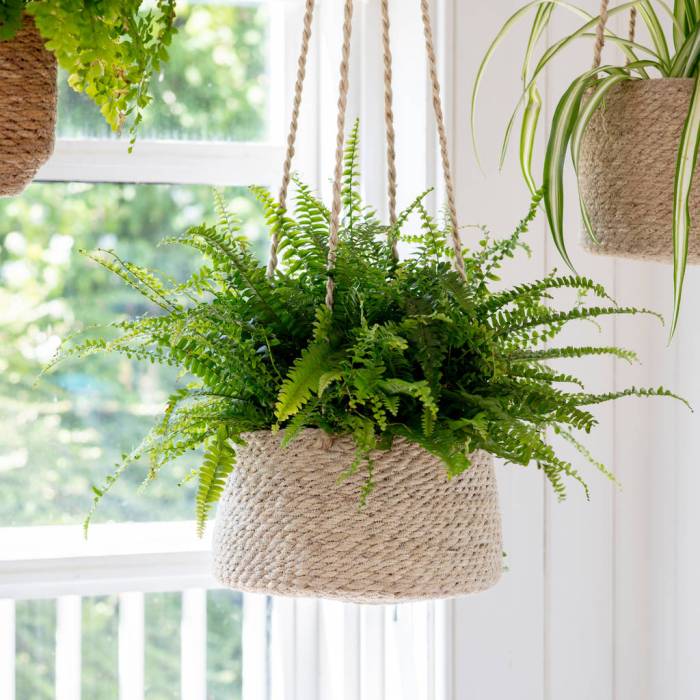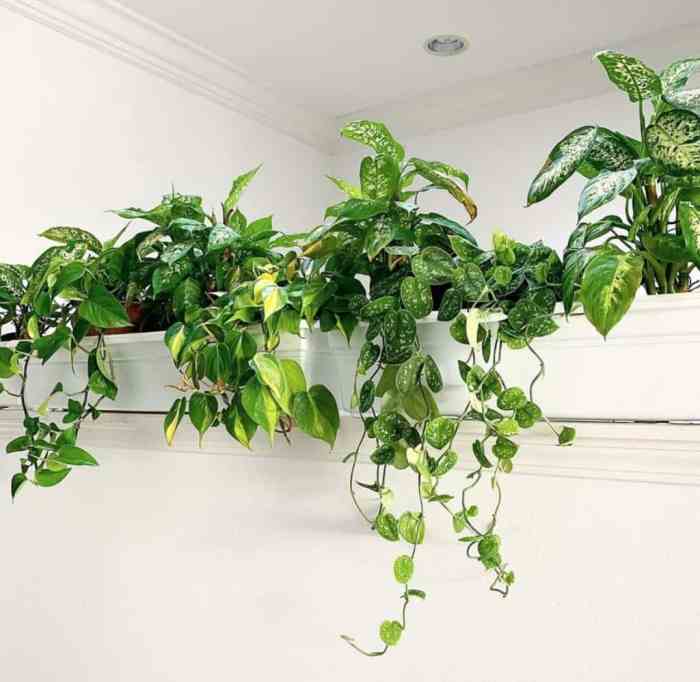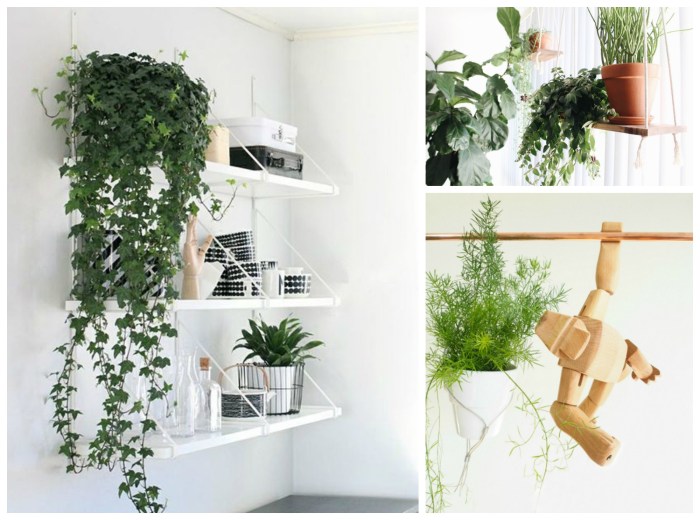Discover the enchanting world of best houseplants for hanging pots, where cascading foliage and trailing vines add a touch of natural elegance to any space. These easy-care varieties thrive in suspended environments, bringing a breath of fresh air and a touch of the outdoors indoors.
From lush ferns to vibrant succulents, our comprehensive guide unveils the secrets to creating captivating hanging plant displays that will transform your home into a verdant oasis.
Best Houseplants for Hanging Pots

Best Houseplants for Hanging Pots: Easy-Care Varieties
For those seeking low-maintenance houseplants to enhance their hanging pots, there are numerous options to choose from. These plants are renowned for their trailing foliage, cascading growth habits, and adaptability to varying light conditions.
- Pothos: With its heart-shaped leaves and trailing vines, pothos is an excellent choice for hanging pots. It thrives in both bright and low light conditions, making it a versatile addition to any room.
- Spider Plant: Known for its long, arching leaves and spiderettes, the spider plant is a low-maintenance option. It can tolerate a range of light conditions and is easy to propagate.
- String of Pearls: This succulent plant features delicate, bead-like foliage that cascades beautifully from hanging pots. It prefers bright, indirect light and infrequent watering.
- Burro’s Tail: With its plump, cylindrical leaves, the burro’s tail is a unique and eye-catching choice. It thrives in bright light and well-draining soil.
- Trailing Jade: This succulent plant is known for its small, round leaves and trailing stems. It is tolerant of drought and prefers bright, indirect light.
Hanging Plant Designs

Hanging plants add a touch of greenery and visual interest to any space. With a little creativity, you can create stunning hanging plant displays that will transform your home or outdoor area. Here are some innovative design ideas to inspire you:
Macrame Hangers
Macrame hangers are a beautiful and bohemian way to display hanging plants. They can be made from a variety of materials, such as cotton, jute, or hemp, and can be customized to any length or style. Macrame hangers add a touch of texture and interest to any space, and they are a great way to show off your favorite plants.
Wall-Mounted Planters
Wall-mounted planters are a great way to save space and add greenery to your walls. They come in a variety of shapes and sizes, and can be made from materials such as metal, ceramic, or wood. Wall-mounted planters are perfect for small spaces, such as apartments or dorm rooms, and they can also be used to create a vertical garden.
Other Creative Display Methods
In addition to macrame hangers and wall-mounted planters, there are many other creative ways to display hanging plants. You can use old baskets, jars, or even teacups to create unique and eye-catching displays. You can also hang plants from the ceiling, or use a plant stand to create a tiered display.
No matter how you choose to display them, hanging plants are a great way to add life and beauty to your home or outdoor area. With a little creativity, you can create stunning hanging plant displays that will be the envy of your friends and family.
Care Guide for Hanging Plants: Best Houseplants For Hanging Pots

Maintaining healthy hanging plants requires a specific care routine that ensures optimal growth and vitality. Proper watering, fertilization, and pruning are essential for their well-being.
Watering
Hanging plants require regular watering, but the frequency varies depending on factors such as the plant species, pot size, and ambient humidity. Generally, water when the top 1-2 inches of soil feel dry to the touch.
Among the best houseplants for hanging pots, the best hanging plant for bedroom is a great choice. Its lush foliage and air-purifying qualities make it an ideal addition to any bedroom. However, other houseplants for hanging pots also offer unique benefits, such as the trailing pothos, which adds a touch of greenery to any room.
- Use room-temperature water and avoid overwatering, as this can lead to root rot.
- Allow excess water to drain completely before hanging the plant back up.
Fertilizing
Fertilizing hanging plants every 2-4 weeks during the growing season (spring and summer) is recommended. Use a balanced liquid fertilizer diluted to half strength.
- Fertilizing provides essential nutrients for healthy growth and blooming.
- Avoid over-fertilizing, as this can damage the plant.
Pruning
Regular pruning is crucial for maintaining the shape and health of hanging plants. Remove dead or damaged leaves and stems as needed.
- Pruning promotes new growth and prevents the plant from becoming overgrown.
- Use sharp, clean pruning shears to avoid damaging the plant.
Health Benefits and Air Purification

Hanging plants are not only decorative but also beneficial for our health and well-being. They have the ability to purify the air we breathe, removing toxins and increasing oxygen levels.
Certain plant species are particularly effective in purifying the air. These include:
Spider Plant
- Removes formaldehyde and carbon monoxide from the air.
- Releases oxygen, improving air quality.
Peace Lily
- Removes benzene, formaldehyde, and trichloroethylene from the air.
- Helps to reduce mold and mildew.
Snake Plant
- Removes formaldehyde, benzene, and trichloroethylene from the air.
- Releases oxygen at night, improving sleep quality.
Troubleshooting Common Problems

Maintaining the health and beauty of hanging plants requires addressing potential problems that may arise, including pests, diseases, and wilting. Understanding the causes and implementing effective solutions is crucial for ensuring their well-being.
Common pests that can infest hanging plants include aphids, mealybugs, spider mites, and scale insects. To combat these pests, insecticidal soap or neem oil can be applied. For more severe infestations, consider using a systemic insecticide. Regular inspection and prompt treatment are essential for preventing infestations from spreading.
For a touch of greenery in your home, consider hanging plants in pots. They can add life to any room, including the bedroom. For a relaxing atmosphere in your sleeping space, check out best bedroom hanging plants . These plants not only enhance the ambiance but also purify the air.
When choosing houseplants for hanging pots, opt for trailing varieties like pothos, spider plants, or string of pearls for a cascading effect.
Diseases
Hanging plants are susceptible to various diseases, including fungal and bacterial infections. Powdery mildew, characterized by a white powdery substance on leaves, can be treated with fungicides. Root rot, caused by excessive watering, can be addressed by improving drainage and reducing water frequency.
Bacterial leaf spot, which manifests as brown or black spots on leaves, requires treatment with a copper-based fungicide.
Wilting, Best houseplants for hanging pots
Wilting in hanging plants can result from various factors, including underwatering, overwatering, root damage, or insufficient light. Ensuring proper watering frequency and providing adequate drainage is essential. Avoid overwatering, as it can lead to root rot. If the plant has root damage, repotting into a new container with fresh potting mix may be necessary.
Providing sufficient light, as per the specific plant’s requirements, is also crucial.
Yellowing
Yellowing of leaves in hanging plants can indicate nutrient deficiency, particularly nitrogen deficiency. Fertilizing the plant with a balanced fertilizer can resolve this issue. Yellowing can also be caused by overwatering or poor drainage, which can lead to root damage.
When searching for the best houseplants for hanging pots, consider those that thrive in hanging conditions. Many of these plants also make excellent bedroom plants hanging bedroom plants hanging . They can add a touch of greenery and freshness to your bedroom while purifying the air.
Some of the best options include pothos, spider plants, and ferns.
Ensuring proper watering practices and providing adequate drainage is essential for preventing yellowing due to these factors.
Summary
Whether you’re a seasoned plant enthusiast or just starting your green journey, our guide to best houseplants for hanging pots empowers you with the knowledge and inspiration to cultivate a thriving indoor ecosystem. Embrace the beauty of hanging greenery and elevate your living space with these enchanting botanical companions.
Helpful Answers
What are the most low-maintenance hanging plants?
Spider plants, pothos, and philodendrons are known for their resilience and ability to thrive with minimal care.
How do I water hanging plants?
Water thoroughly until excess water drains from the drainage holes. Allow the soil to dry out slightly between waterings.
What are some creative ways to display hanging plants?
Use macrame hangers, wall-mounted planters, or hanging baskets to create unique and eye-catching displays.